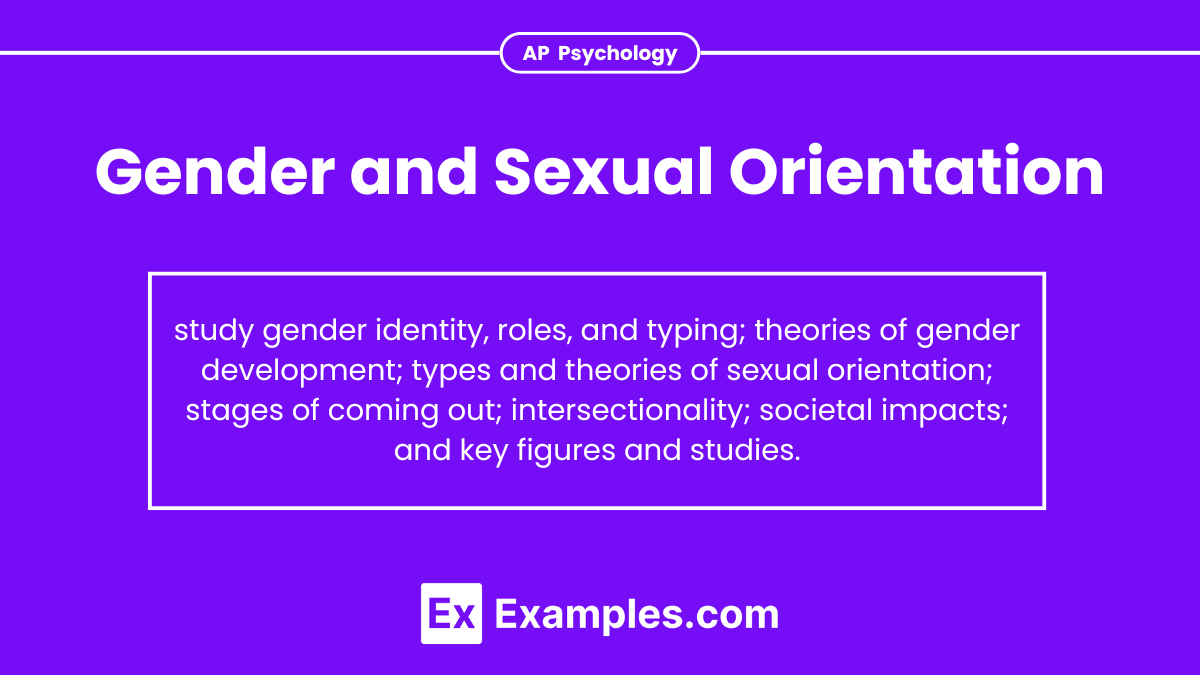Gender and sexual orientation are crucial topics in understanding human behavior and identity. In AP Psychology, you will explore the distinctions between gender identity, roles, and typing, along with various types of sexual orientation. Key theories, such as biological, social learning, cognitive developmental, and gender schema, provide insights into how these identities develop. Understanding these concepts is essential for recognizing the social and psychological factors that influence individual differences and experiences.
Learning Objectives
Understand the definitions of gender and sexual orientation, including gender identity, roles, and typing. Learn key theories of gender development (biological, social learning, cognitive developmental, and gender schema). Understand the different types of sexual orientation and related biological and psychosocial theories. Recognize the stages of coming out, the concept of intersectionality, and societal impacts such as prejudice, discrimination, and mental health effects. Familiarize yourself with key figures and studies in this field.
Gender
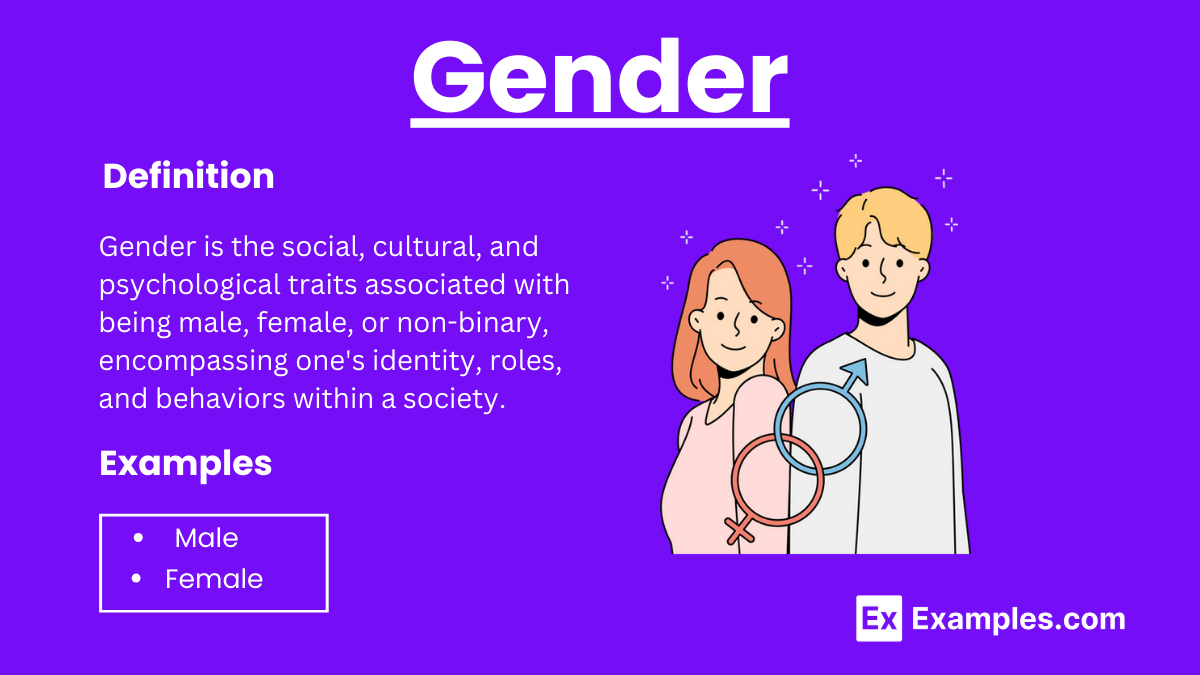
Gender refers to the social, cultural values, and psychological traits typically associated with one’s sex. It encompasses a range of identities beyond the binary male and female.
Key Concepts
Gender Identity
- Definition: One’s personal sense of their own gender, which may or may not correspond with their sex assigned at birth.
- Examples: Identifying as male, female, genderqueer, non-binary, etc.
Gender Roles
- Definition: Societal norms dictating the behaviors, attitudes, and activities appropriate for men and women.
- Examples: Women being caregivers, men being providers.
Gender Typing
- Definition: The process by which children learn the behaviors expected of their gender.
- Examples: Boys playing with trucks, girls playing with dolls.
Theories of Gender Development
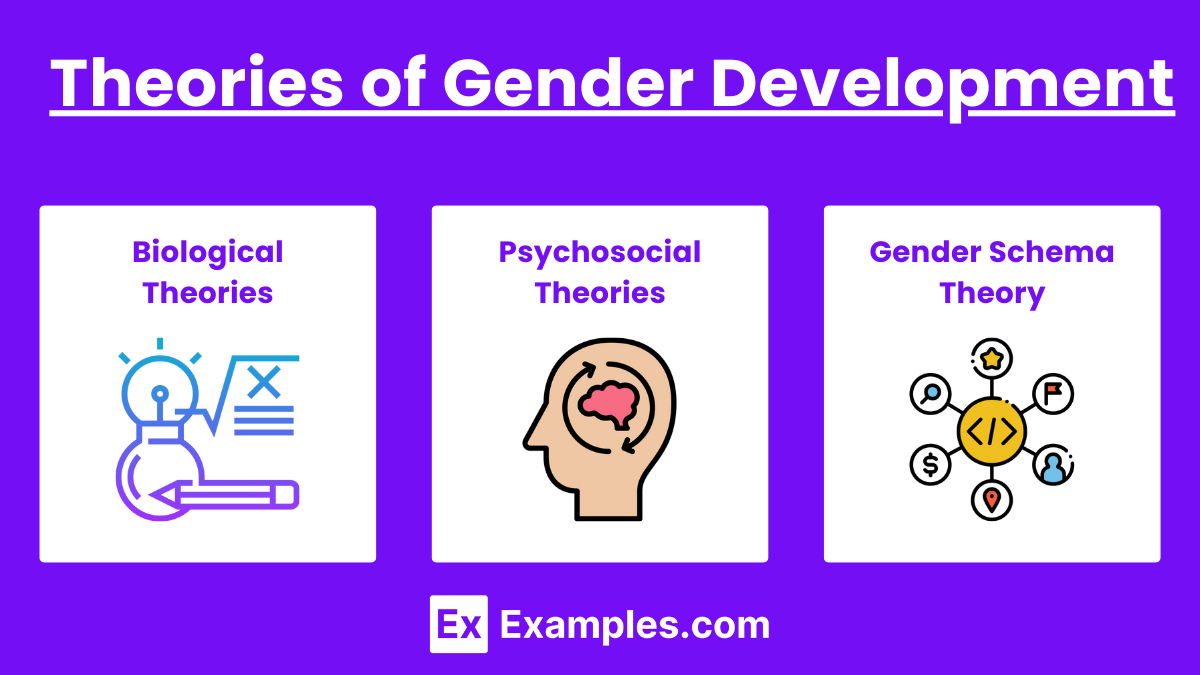
Biological Theories
- Hormonal Influences: Testosterone and estrogen influence physical development and behavior.
- Brain Structure: Differences in male and female brains, like the size of certain regions, can affect behavior and cognition.
Psychosocial Theories
- Psychoanalytic Theory (Freud): Gender identity forms during the phallic stage (ages 3-6) through identification with the same-sex parent.
- Social Learning Theory (Bandura): Gender roles are learned through reinforcement, punishment, and modeling.
- Cognitive Developmental Theory (Kohlberg): Children actively construct gender roles as they acquire gender constancy, understanding that their gender is fixed.
Gender Schema Theory
- Definition: Proposes that children form a framework of knowledge about gender that influences how they perceive and interact with the world.
- Examples: A child might believe that only boys can be strong, affecting their interests and activities.
Sexual Orientation

Sexual Orientation refers to an individual’s pattern of physical, romantic, and emotional attraction to others.
Key Concepts
Types of Sexual Orientation
- Heterosexual: Attraction to individuals of the opposite sex.
- Homosexual: Attraction to individuals of the same sex.
- Bisexual: Attraction to individuals of both sexes.
- Asexual: Lack of sexual attraction to others.
- Pansexual: Attraction to individuals regardless of their sex or gender.
Theories of Sexual Orientation
Biological Theories
- Genetic Influences: Twin studies suggest a genetic component to sexual orientation.
- Prenatal Hormones: Exposure to different levels of hormones in the womb may influence sexual orientation.
- Brain Structure: Differences in brain anatomy, such as the size of certain hypothalamic nuclei.
Psychosocial Theories
- Psychoanalytic Theory: Freud suggested that early childhood experiences and family dynamics influence sexual orientation.
- Learning Theories: Some theories propose that sexual orientation is influenced by positive reinforcement of certain behaviors during childhood.
Development of Sexual Orientation
Stages of Coming Out
- Awareness: Recognizing same-sex attractions.
- Exploration: Seeking information and exploring feelings.
- Disclosure: Sharing one’s orientation with others.
- Acceptance: Integrating orientation into one’s overall identity.
- Integration: Living openly as one’s true self.
Intersectionality
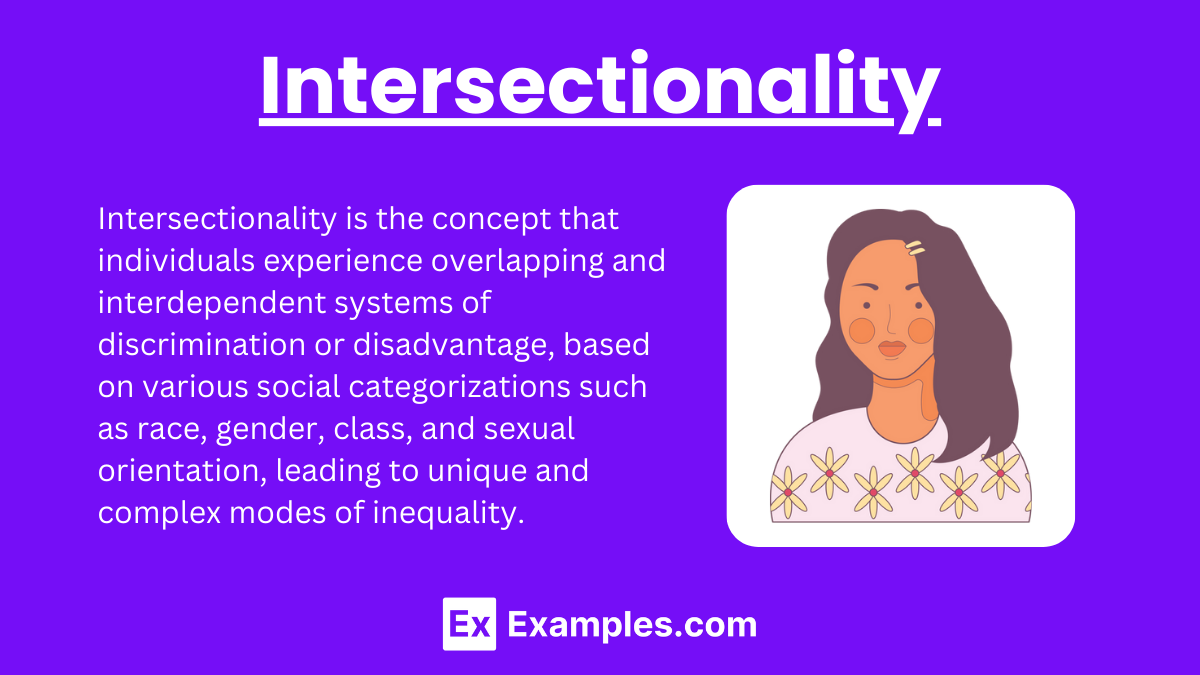
- Definition: The interconnected nature of social categorizations such as race, class, and gender as they apply to a given individual or group.
- Examples: A black lesbian woman may face different experiences compared to a white lesbian woman due to the intersection of race and sexual orientation.
Gender and Sexual Orientation in Society
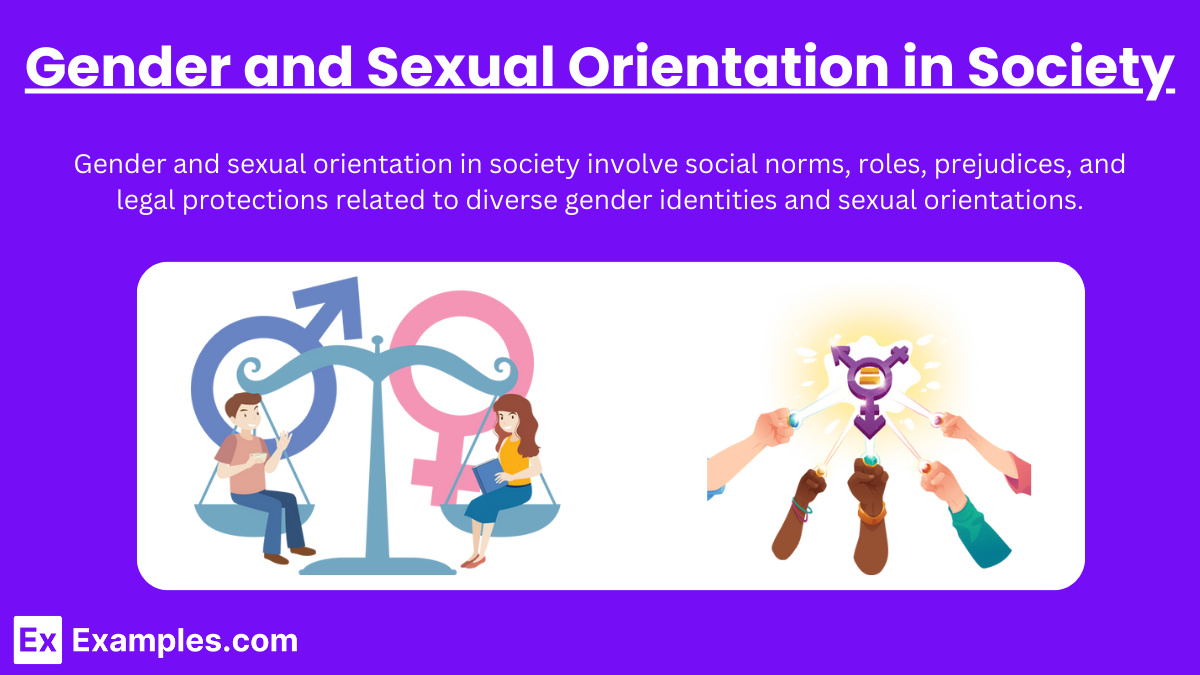
Prejudice and Discrimination
- Homophobia: Dislike or prejudice against homosexual people.
- Transphobia: Dislike or prejudice against transgender people.
- Heteronormativity: The beliefs that heterosexuality is the default or normal sexual orientation.
Legal and Social Changes
- Marriage Equality: Legal recognition of same-sex marriages in many countries.
- Anti-Discrimination Laws: Protections for individuals based on sexual orientation and gender identity in employment, housing, and public accommodations.
Impact on Mental Health
- Minority Stress: The heightened stress experienced by individuals in stigmatized groups.
- Support Systems: The importance of supportive environments for the well-being of LGBTQ+ individuals.

